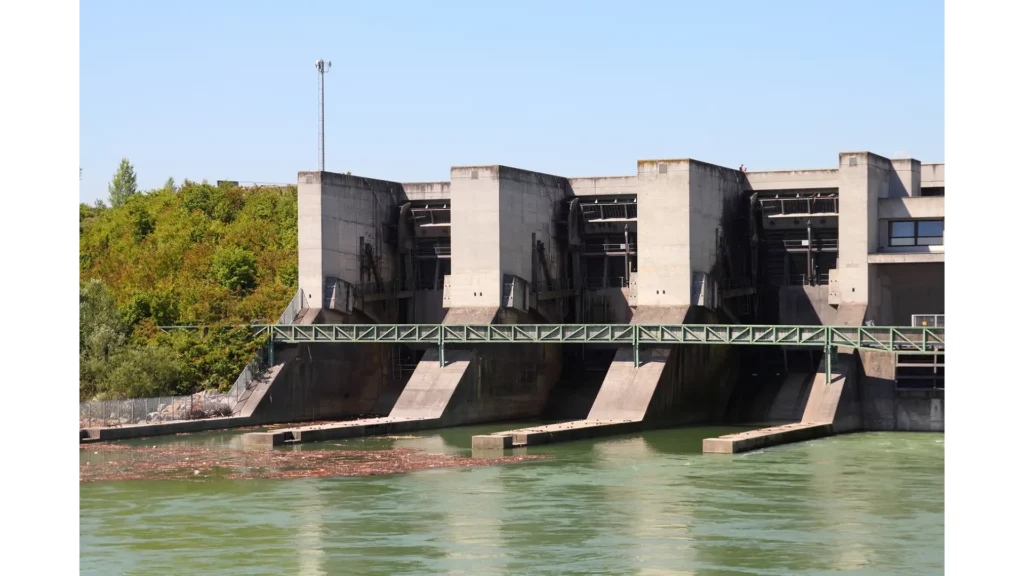Hydro power plants harness the energy of flowing water to generate electricity, making them a cornerstone of renewable energy resources around the globe.
Understanding the Energy Conversion Process of Hydro Power Plants is crucial for those interested in sustainable energy, engineering, environmental science, and policy-making.
This guide dives deep into the mechanics, benefits, challenges, and future of hydro power, focusing on the Energy Conversion Process of Hydro Power Plants.
Understanding Hydro Power
Hydro power, one of the oldest sources of energy, utilizes the natural flow of water to generate power. It plays a pivotal role in meeting our energy needs sustainably.
The Energy Conversion Process of Hydro Power Plant is a testament to human ingenuity in harnessing natural forces for our benefit.
As we delve into this process, we'll uncover the intricacies of converting kinetic energy from water into electrical energy.
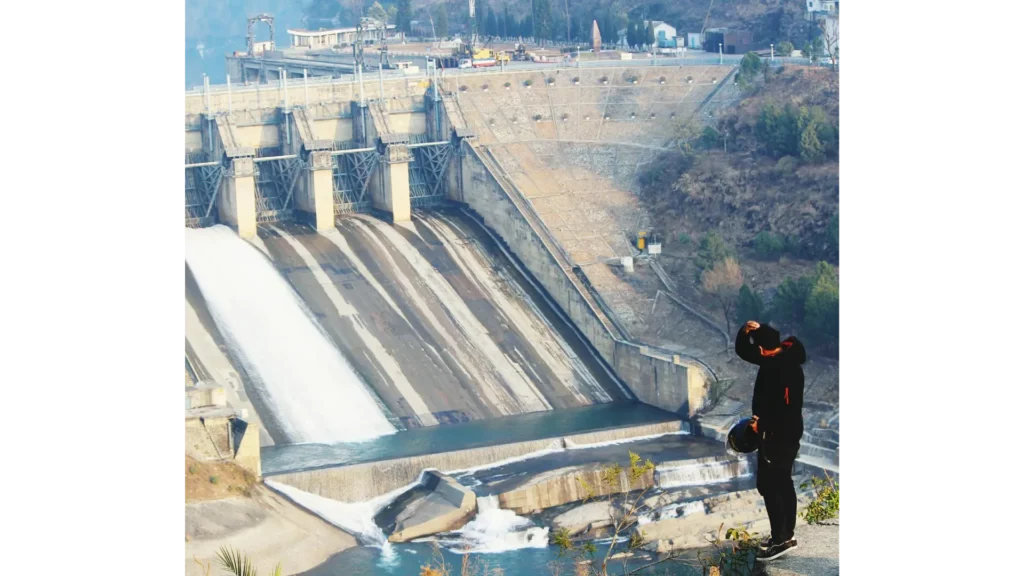
The Basics of Hydro Power Plants
A hydro power plant typically consists of three major components: a reservoir, a dam, and a power generation facility.
The Energy Conversion Process of Hydro Power Plant starts with water being stored in the reservoir, often located at a high altitude, creating potential energy.
The water is then released through turbines, converting potential energy into kinetic energy, and finally into mechanical energy for electricity generation.
Read also our post on the Angat Hydroelectric Power Plant
The Energy Conversion Process of Hydro Power Plant
- Water Collection: The process begins with the accumulation of water in a large reservoir, which is essential for maintaining a consistent flow rate through the turbines.
- Potential Energy Conversion: As water is released from the reservoir, it flows downwards due to gravity, converting potential energy into kinetic energy.
- Kinetic to Mechanical Energy Conversion: The flowing water turns turbines, which are connected to generators. This step is where kinetic energy is converted into mechanical energy.
- Mechanical to Electrical Energy Conversion: The mechanical energy from the turbines is then converted into electrical energy by generators. Through electromagnetic induction, the rotation of turbines generates electricity.
- Transmission of Electricity: The generated electricity is then transmitted through power lines to homes, businesses, and industries.
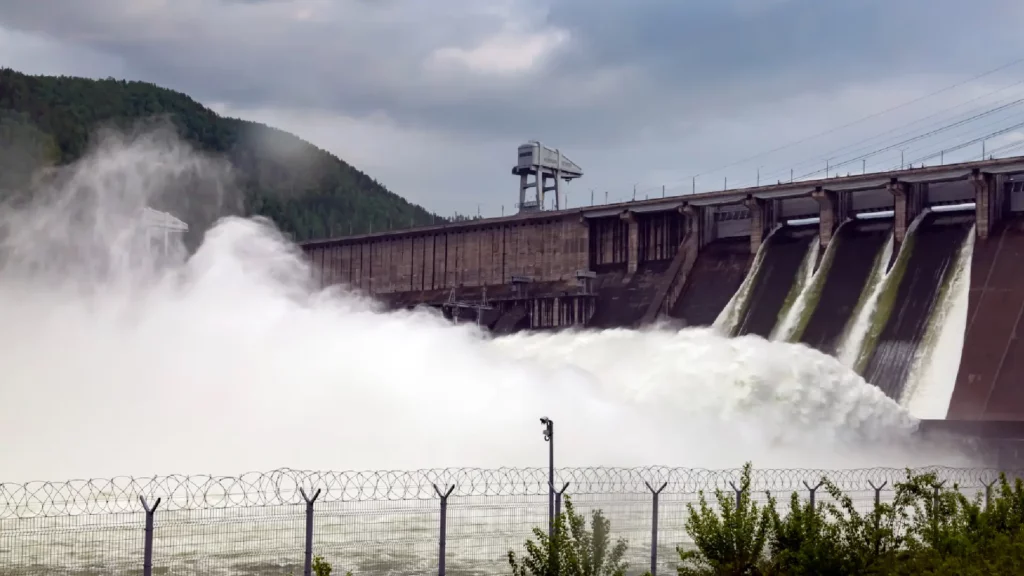
Understanding Hydro Power Plant Energy Conversion
The hydro power plant energy conversion process is a key element in renewable energy, efficiently transforming the kinetic energy of water into electricity.
This sustainable power generation method highlights the transition from mechanical to electrical energy, showcasing hydro power's significant role in clean energy initiatives.
With ongoing advancements in engineering and environmental management, the energy conversion process in hydro power plants is poised for further improvements in sustainability and efficiency.
Key Components of Hydro Power Plants
- Dam: The structure that creates the reservoir to store water. It is crucial for controlling the flow of water and thus, the generation of electricity.
- Reservoir: Acts as a storage area for water. Its size can significantly influence the power output of the hydro power plant.
- Turbines: Devices that convert the kinetic energy of water into mechanical energy. Different types of turbines are used based on the water flow and the design of the plant.
- Generators: Machines that convert mechanical energy from turbines into electrical energy.
- Control Gates: Regulate the flow of water to the turbines, ensuring optimal operation of the plant.
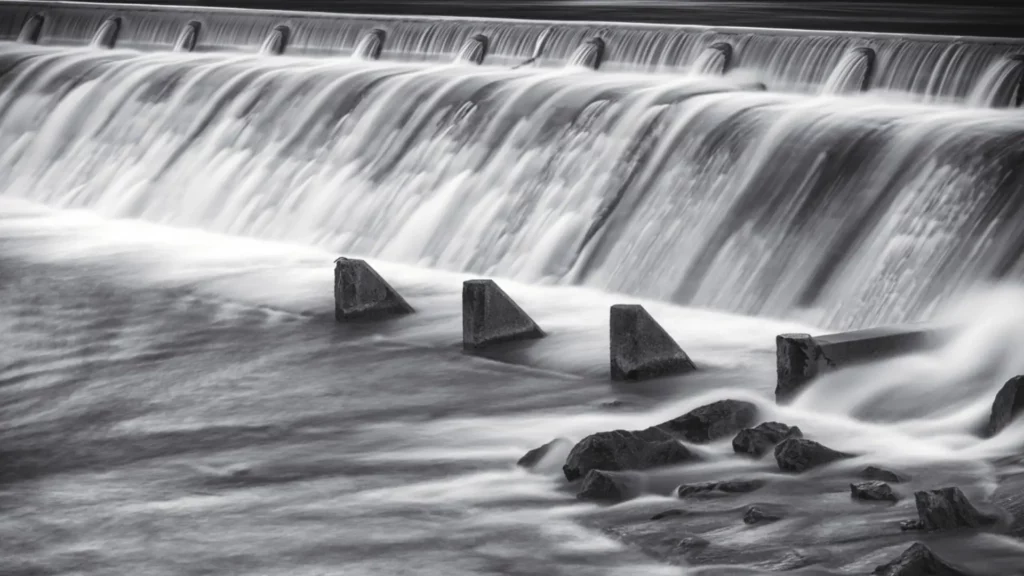
Benefits of the Energy Conversion Process of Hydro Power Plant
The Energy Conversion Process of Hydro Power Plant stands out for its multitude of benefits, transcending mere energy generation to encompass economic, environmental, and social advantages. Here's a consolidated list reflecting its wide-ranging impact:
- Renewable and Sustainable Energy Source: Utilizes water, an endlessly replenishing resource, ensuring a continuous and sustainable energy supply.
- Low Operational and Maintenance Costs: Characterized by significantly lower expenses compared to fossil fuel-based plants, due to water being a free and efficient fuel source.
- Stable Power Supply: Capable of quickly adjusting power output to meet demand fluctuations, ensuring reliability in power grids.
- Minimal Environmental Impact: Features a lower environmental footprint than traditional energy sources, with no emissions of harmful gases.
- Reduction of Greenhouse Gas Emissions: Plays a crucial role in reducing greenhouse gas emissions by replacing fossil fuel-based electricity generation.
- Flood Control and Water Management: Aids in flood control and water management, reducing the risk of damage during extreme weather events through controlled water release.
- Socioeconomic Benefits: Leads to regional economic growth, job creation, improved infrastructure, and enhanced living standards, especially in remote areas.
- Contribution to Energy Mix Diversification: Reduces dependency on imported fuels, enhances energy security, and complements other renewable energy sources, such as wind and solar.
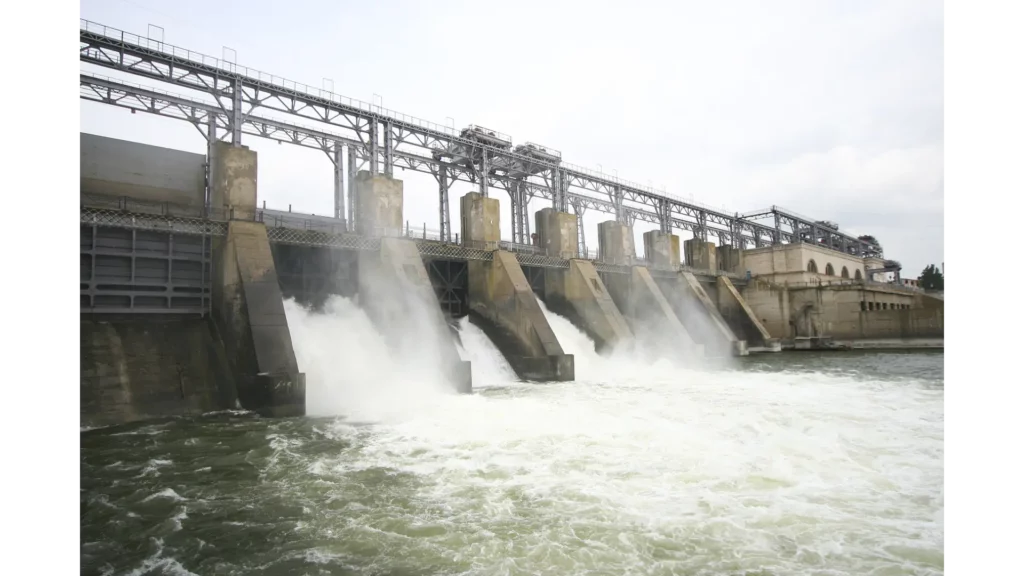
The Key Role of Hydro Power Plant Energy Conversion
The importance of the Energy Conversion Process of Hydro Power Plant cannot be overstated, as it represents a critical link in the chain of renewable energy sources that are essential for sustainable development and environmental preservation.
This process not only facilitates the conversion of natural water flow into a substantial amount of clean, renewable electricity but also underscores the role of hydro power in stabilizing electricity grids, providing a reliable energy supply, and reducing dependence on fossil fuels.
Moreover, by harnessing the power of water, which is a renewable and abundant resource, the energy conversion process plays a pivotal role in mitigating climate change impacts, making it a cornerstone of global efforts to transition to a more sustainable and eco-friendly energy future.
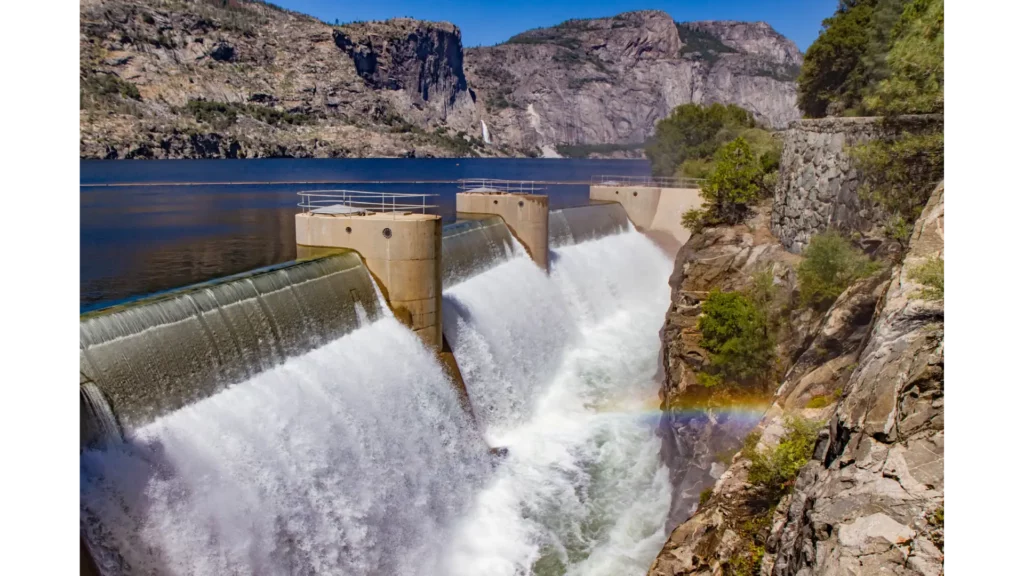
The Future of Hydro Power Plant Energy Transformation
As we navigate towards a more sustainable and environmentally friendly energy future, hydro power stands at the forefront of this transition.
The Energy Conversion Process of Hydro Power Plant is undergoing significant transformations, promising to enhance efficiency and minimize environmental impacts. Here's a concise overview of what lies ahead:
- Innovations in Turbine Technology
Future turbines will be more efficient and environmentally friendly, capable of adjusting to water flow variations to optimize energy production while reducing ecological disruptions.
These advancements will improve the sustainability and operational longevity of hydro power plant energy transformation.
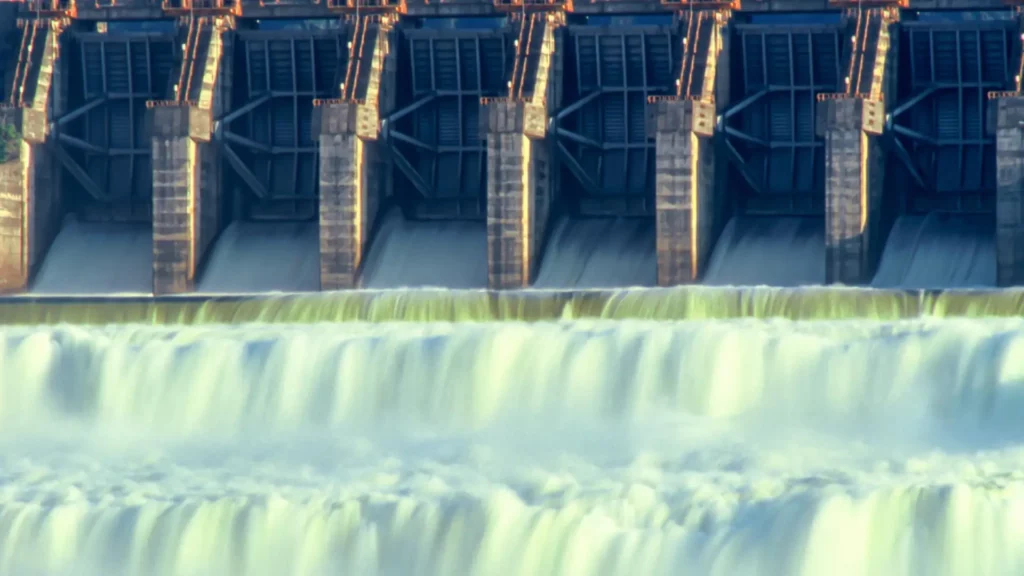
- Advancements in Environmental Mitigation Techniques
Hydro power's future emphasizes reducing ecological impacts through better fish passage systems, sediment management, and habitat restoration.
These efforts aim to preserve biodiversity and ensure the environmental sustainability of hydro power.
- Hydro Power and Smart Grid Integration
The integration with smart grids will allow hydro power to contribute more effectively to the energy mix.
Smart grids facilitate a responsive energy system that can dynamically adjust to supply and demand, enhancing the stability and efficiency of the Energy Conversion Process of Hydro Power Plant.
- Digitalization and Predictive Maintenance
By adopting digital technologies, hydro power plants will benefit from predictive maintenance and operational optimization. This digital transformation will lead to safer, more efficient, and cost-effective energy production.
- Policy Support and Investment
The growth and development of hydro power are increasingly supported by policy and investment, recognizing its role in achieving renewable energy goals.
Financial incentives and investments in research are vital for expanding hydro power capabilities, particularly in underexploited regions.
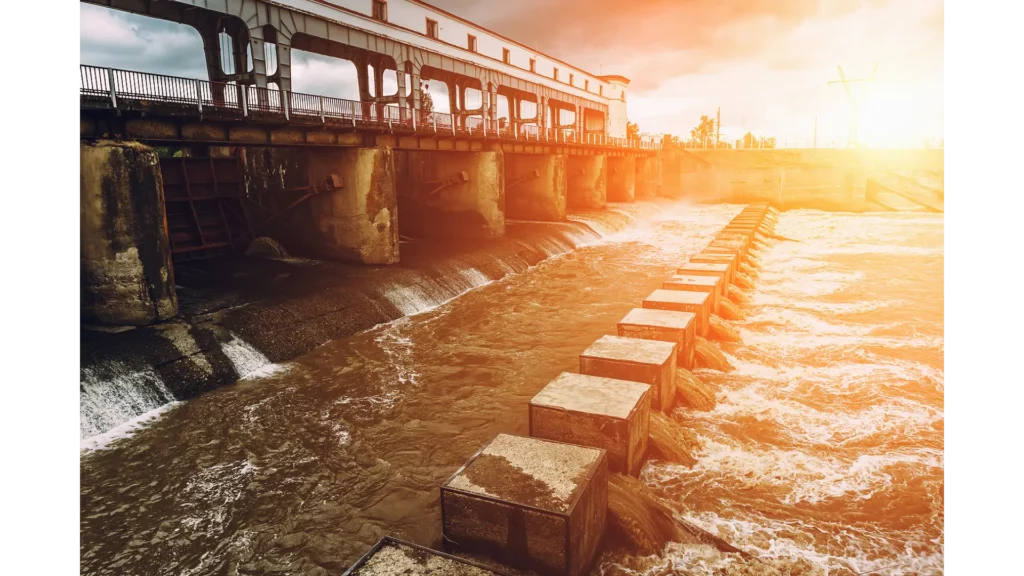
FAQs on the Energy Conversion Process of Hydro Power Plant
What is a Hydro Power Plant?
A hydro power plant is a facility that converts the energy stored in water into electrical energy. This conversion is achieved through the Energy Conversion Process of Hydro Power Plant, which harnesses the potential and kinetic energy of water.
How Does the Energy Conversion Process of Hydro Power Plant Work?
The Energy Conversion Process of Hydro Power Plant involves several steps. Water stored in a reservoir behind a dam is released and flows through turbines, spinning them, which in turn activates generators to produce electricity. This process converts potential energy of water into kinetic, then mechanical, and finally, electrical energy.
Why is the Energy Conversion Process of Hydro Power Plant Considered Renewable?
It is considered renewable because it uses water, a natural resource that is continuously replenished by the Earth's hydrological cycle, including precipitation and snowmelt. Unlike fossil fuels, water does not deplete when used to generate electricity.
What Types of Turbines are Used in Hydro Power Plants?
There are mainly three types of turbines used in hydro power plants: Kaplan, Francis, and Pelton. The selection depends on the water flow and the height from which the water falls. Each type has a different design suited for various conditions of flow and head.
Can the Energy Conversion Process of Hydro Power Plant Adjust to Changes in Electricity Demand?
Yes, one of the advantages of hydro power plants, especially those with large reservoirs, is their ability to quickly adjust to changes in electricity demand. By controlling the amount of water flowing through the turbines, operators can increase or decrease the power output as needed.
How Long Does a Hydro Power Plant Last?
Hydro power plants are designed for longevity, often lasting 50 to 100 years or more with proper maintenance. Their long operational life, combined with the renewable nature of water, makes them a sustainable choice for electricity generation.
Are There Any Environmental Impacts of the Energy Conversion Process of Hydro Power Plant?
While hydro power is cleaner compared to fossil fuels, it can have environmental impacts, including changes to river ecosystems, fish migration, and water quality. However, modern practices and technologies aim to minimize these effects, making hydro power a more environmentally friendly option.
How Efficient is the Energy Conversion Process of Hydro Power Plant?
The efficiency of the Energy Conversion Process of Hydro Power Plant can reach up to 90%, making it one of the most efficient methods of electricity generation. Efficiency can vary based on the plant's design, the type of turbines used, and the height from which water falls.
What Role Does the Energy Conversion Process of Hydro Power Plant Play in Combating Climate Change?
Hydro power plays a significant role in combating climate change by providing a substantial portion of the world's electricity without emitting greenhouse gases during operation. It helps reduce reliance on fossil fuels and supports the transition to a cleaner energy mix.
Can Hydro Power Be Integrated With Other Renewable Energy Sources?
Yes, hydro power can be integrated with other renewable energy sources, such as wind and solar, to create a more reliable and balanced energy supply. The flexibility of hydro power plants, especially those with storage capabilities, allows them to complement intermittent sources by providing power when solar or wind generation is low.
Energy Conversion Process of Hydro Power Plant Conclusion
The Energy Conversion Process of Hydro Power Plant is a cornerstone of renewable energy, offering a clean, reliable, and sustainable power source.
Understanding this process is crucial for advancing our energy systems and mitigating the impacts of climate change.
As technology advances, the efficiency and sustainability of hydro power will only improve, playing a critical role in our transition to a greener energy future.

